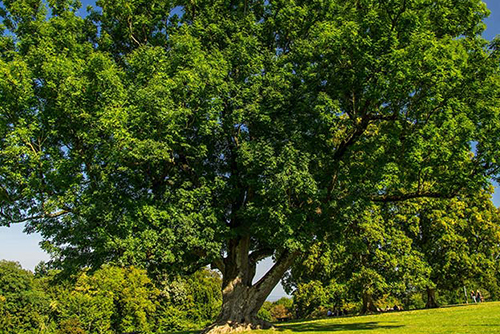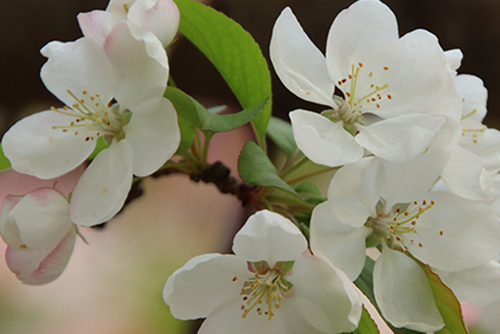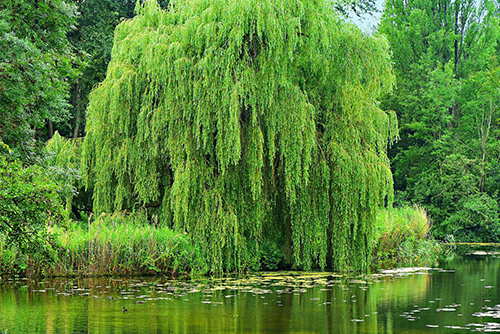
What is a Specimen Tree
Avoid being embarrassed by a dull, uninteresting yard. Knowing which specimen trees to plant will help you turn your boring yard into beautiful sight to see.
nannenarboretum.org gathered the following information on how to identify a specimen tree, what they can do in your landscape, and how they are protected.
What Makes a Tree a Specimen Tree?
Generally speaking, any one tree planted as a focus of attention or centerpiece is considered a specimen tree. This tree could be noteworthy due to its size, species, flowers, fruit, bark, form, or rarity. It could be a “common” but well-situated tree with attractive branching.
Note: Many municipalities across the United States possess ordinances that not only define what a specimen tree is but establish protective laws to preserve them. Read more information about specimen tree ordinances and permit requirements at treeremovalpermit.com
Tip: Ornamental trees, shrubs, annuals, and other plant species differ from specimen trees in that they are cultivated and planted for mostly aesthetic purposes in yards, parks, gardens, recreational fields, cemeteries, and medians.
What Are Some Examples of Specimen Trees
A specimen tree for your yard or landscape should be a species that demands attention for its size, shape, traits, color, or other uniqueness. Some popular specimen tree species include:
Flowering Trees – These trees can be excellent specimen trees, especially with beautiful blossoms that last a long time. Some of these trees include:

- Cherry (Prunus avium)
- Crabapple (Malus)
- Crape Myrtle (Lagerstroemia speciosa)
- Dogwood (Cornus florida)
- Magnolia (Magnolia)
- Pear (Pyrus communis)
- Plum (Prunus domestica)
- Redbud (Cercis canadensis)
Flowering trees make excellent specimen trees, and the ones that produce edible fruits provide even more reason to protect and nurture them.
Tall Trees – If you have ample space to plant one of the following trees, you’ll be in for a towering treat as they reach incredible heights and spreads as they mature:
- Cypress (Chamaecyparis)
- Douglas-fir (Pseudotsuga menziesii)
- Eucalyptus (Eucalyptus globulus)
- Giant Sequoia (Sequoiadendron giganteum)
- Ponderosa Pine (Pinus ponderosa)
- Redwood (Sequoia sempervirens)
- Spruce (Picea sitchensis)
- Western Hemlock (Tsuga heterophylla)
Note: When such tall tree species are planted in nutrient-rich soil and have access to a sufficient water source, they can reach hundreds of feet in height.
Willow Trees – Willows include around 400 species of stunning deciduous trees and shrubs, typically found thriving in moist soils in cold and temperate regions of the Northern Hemisphere. This is one of the fastest-growing tree species in the world, and some of the more common varieties include:

- Corkscrew Willow (Salix matsudana Tortuosa)
- Weeping Willow (Salix babylonica)
- White Willow (Salix alba)
Tip: Be cautious when planting willows. Determine where sewer or water pipes are located, and plant your willow 20 feet or more away from them. A willow’s roots naturally gravitate towards underground pipes carrying water.
Colorful Trees – Sometimes, trees make a statement with bold colors. The following are some of the most desired tree species and the color that makes them unique:
- Cherry (Prunus avium) – White or pink blooms
- Crape Myrtle (Lagerstroemia speciosa) – White, red, purple, or pink flowers
- Dogwood (Cornus florida) – White, pink, purple, or red flowers
- Jacaranda (Jacaranda mimosifolia) – Violet blooms
- Rose of Sharon (Hibiscus syriacus) – White, pink, red, blue, or purple blooms
- Japanese Maple (Acer palmatum) – Red foliage
- Copper Beech or Purple Beech (Fagus sylvatica) – Reddish-purple foliage
- Golden Chain Tree (Laburnum anagyroides) – Golden yellow flowers
With some planning, your colorful specimen tree can appear to be an oasis of bursting color amidst a palette of green shades and tones.
Classic Trees – Some tree species have traits that make them so notable that they are included in folklore, poems, movies, plays, and songs. Some of the most recognizable tree species include:
- Ash (Fraxinus)
- Elm (Ulmus)
- Oak (Quercus)
- Fir (Abies)
- Pine (Pinus)
- Spruce (Picea)
Several tree species are highly susceptible to disease and insect infestation. Before planting any tree species, consult a reputable nursery, greenhouse, or arborist to make yourself aware of any potential threats to your tree’s health. To locate an ISA certified arborist near you, visit isa-arbor.com
Specimen Trees
In this article, you discovered what specimen trees are, why they are classified as specimen trees, how they are protected, and how they can instantly transform a simple yard into a conversation topic.
Planting a specimen tree in your yard helps diversify and strengthen the ecosystem, provides passers-by with a stunning sight to see, and gives you years of motivation to maintain a gorgeous landscape.
Not planting a specimen tree leaves your yard like anyone else’s and lowers its significance in your community.
Sources:
extension.missouri.edu/publications/g6810
warnell.uga.edu/sites/default/files/inline-files/Extreme%20Trees%20-%20Tallest%20Biggest%20Oldest%20ARBOR-07.pdf
gardeningsolutions.ifas.ufl.edu/plants/trees-and-shrubs/trees/red-trees.html